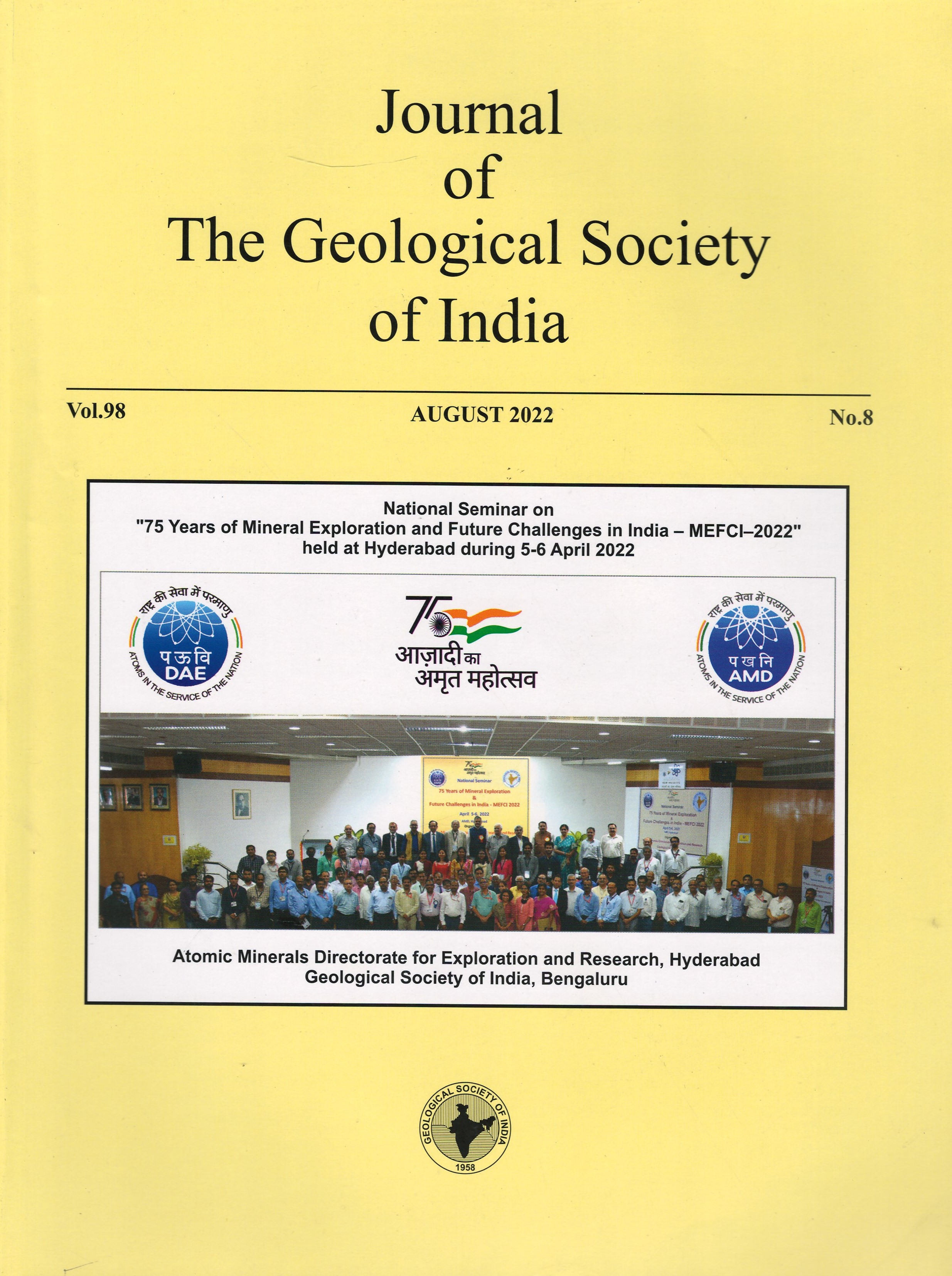Application of Microgravity Survey in the Exploration of Raremetal Bearing Pegmatites – A Case Study from Marlagalla, Mandya District, Karnataka
DOI:
https://doi.org/10.1007/s12594-022-2133-8Keywords:
No KeywordsAbstract
Geologically, the Marlagalla area represents the southern part of NNE-SSW trending Nagamangala schist belt, which is a member of ancient supracrustals of Sargur Group and situated in the southern part of Western Dharwar Craton. The area is mostly soil cover with limited exposure of amphibolite/hornblende schist and intrusive pegmatite. Pegmatites occur as lensoidal bodies within the amphibolite. Microgravity surveys are attempted for the first time to detect pegmatites within the amphibolite.
The density between pegmatite (Density= 2.58-2.61 gm/cc) and host rock amphibolite (Density=3.09-3.14 gm/cc) gives detectable contrast to identify pegmatite within amphibolite. Gravity data are acquired over a grid of 5m x 30m using CG-5 Autograv gravimeter which has 1 μGal sensitivity. Elevation data are acquired using SP80 post processing DGPS instrument which has 5 mm elevation accuracy. Analysis of residual gravity and first vertical derivative (FVD) filters facilitated in delineating the pegmatite bodies. The pegmatite bodies show low gravity anomalies with an amplitude range of -5 to -200 μGal. FVD map of the residual gravity indicated four major N100E trending linear anomalies of -36 to 3.0 μGal/m corresponding to pegmatite bodies of varying strike (100-200m) and width (10-15m).
2D-Forward modeling of microgravity data helped in deriving the subsurface geometry of the pegmatites. Borehole drilled subsequently based on the results of microgravity surveys intercepted pegmatites within the amphibolite. Thus, the technique has proved for exploration of pegmatite in contrasting environment of amphibolite. Pegmatite are known for rare metals and lithium minerals. Indirectly the model proposed here will help in exploration of rare metals and Li bearing pegmatite.

 B. Srinivasarao
B. Srinivasarao






